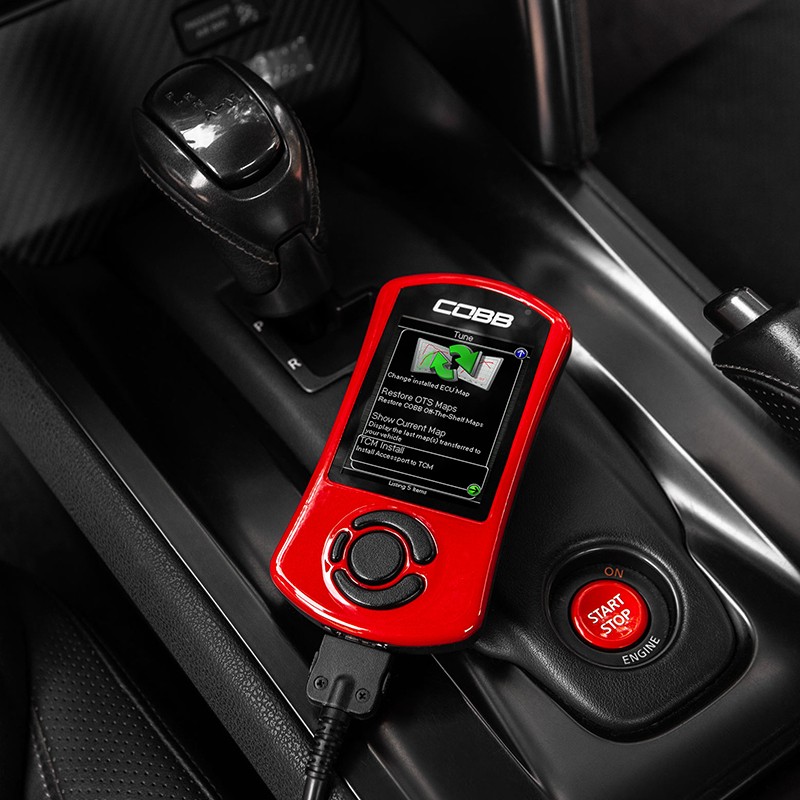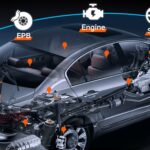While initially designed for vehicle diagnostics, your car’s OBD2 port offers a much more exciting capability: performance ECU tuning.
Since its inception, the primary purpose of the OBD2 system, from the perspective of car manufacturers and regulatory bodies, has been emissions control. It was intended for emissions testing and identifying issues that could negatively impact emissions. Any additional functionalities were considered secondary. However, the potential of OBD2 scanners extends far beyond this original scope, offering a pathway to enhance your vehicle’s performance.
Although the capabilities and possibilities can vary significantly across different car makes and models, the OBD2 port serves as a gateway to virtually every ECU-connected component in your vehicle. With the right knowledge and tools, you can modify these components in ways that might surprise many.
This capability arises from the fact that Original Equipment Manufacturers (OEMs) utilize the OBD2 port to implement software updates, addressing known issues, factory recalls, or simply applying updates during routine servicing. If manufacturers can use this port to reprogram the Engine Control Unit (ECU), then theoretically, others can as well. This is the core principle behind OBD2 ECU tuning.
OBD2 ECU Reflashing: The Basics
The most straightforward and cost-effective method of OBD2 ECU tuning is ECU reflashing. This typically involves paying a specialist to reprogram your ECU. This service can be performed at your location by a mobile technician, at a tuning shop, or even on a dynamometer (dyno) to measure performance gains before and after the tune. Regardless of the location, the fundamental process remains consistent.
Tuning professionals use specialized hardware and software to upload a modified program, known as a “tune,” onto your car’s ECU. These are commonly referred to as “Stage 1” tunes, designed for vehicles with minimal or no modifications. Depending on the vehicle and the tuner, tunes for specific upgrade paths may also be available.
Often marketed as “custom” remaps, these generic reflashes are rarely truly bespoke for standard cars. At most, they represent slightly optimized versions of a pre-existing “Stage 1” tune. It’s crucial to differentiate this type of “custom” map from a genuinely custom tune crafted for highly modified engines with upgraded components like injectors or larger turbos.
DIY OBD2 Flash Programmers
For those unable to visit a tuner or prefer a hands-on approach, DIY OBD2 programmers offer an excellent alternative. Devices like the Cobb Accessport, Superchips Bluefin, and Dreamscience provide user-friendly interfaces for ECU tuning. The specific functionalities vary depending on the device and vehicle, but they generally allow car owners to upload pre-loaded modified ECU tunes to their cars. Some devices offer advanced capabilities beyond basic flashing.
These programmers can also be used to datalog vehicle parameters while driving on the road or on a dyno. This data log can then be sent to a tuner remotely, who can create a custom tune tailored to your car’s specific modifications. The process often involves iterative logging and tune adjustments until the desired performance is achieved, mirroring the approach of many traditional remapping services but empowering the car owner to manage the flashing process.
Custom OBD2 ECU Tuning: For Maximum Performance
For achieving significant power gains, especially in heavily modified vehicles, a full custom tune by an experienced tuner is the ultimate solution. This is typically performed on a dyno, but can also be done on the road or remotely. The prerequisites are a factory ECU capable of full custom tuning and a tuner with the expertise to execute it. It’s important to note that not all factory ECUs are programmable to this extent; in fact, most are not. This limitation often necessitates aftermarket ECUs for extensively tuned engines. However, notable exceptions exist.
Nissan GT-Rs, despite initial claims of “un-hackable” electronics, can be extensively tuned via the OBD2 port and the stock ECU. Similarly, many other high-performance engines are also OBD2 tuning compatible. One particularly interesting example is the 2001-2005 Subaru Impreza. Thanks to hidden functionalities within its ECU, originally intended for Group N rally applications, it possesses remarkable tuning potential when used with software like CarBerryROM. The factory Subaru ECU contains a wealth of rally-specific features, surpassing even some aftermarket ECUs. These include rally anti-lag, launch control, rotational idle, and support for multiple maps. Remarkably, factory interior switches, normally controlling functions like the heated rear window, can be repurposed to control anti-lag, switch maps, and more.
Creating a full custom remap is not a DIY task for beginners and exceeds the capabilities of most generic tuning shops. However, if you own a highly modified car and find a skilled tuner familiar with your platform, you might be able to reach your performance goals without the expense of an aftermarket ECU.
OBD2 Transmission Remapping: Beyond the Engine
Performance enhancements via OBD2 are not limited to the engine. Certain automatic transmissions, particularly dual-clutch gearboxes like VW/Audi DSG, Porsche PDK, BMW DCT, and Nissan GT-R transmissions, can also be reprogrammed to improve performance. While manual gearboxes remain unaffected by this type of tuning, automatic and dual-clutch transmissions can be significantly transformed through software modifications.
OBD2 transmission control unit (TCU) remapping allows adjustments to upshift and downshift points in automatic mode, quicker and firmer shifts, improved launch control, and increased torque limits. Perhaps most importantly for dual-clutch systems, TCU tuning can increase hydraulic pressure, dramatically improving clutch clamping force and preventing slippage, even with significant engine power and torque upgrades.
Similar to engine tuning, transmission remapping can be achieved through generic reflashes, plug-in modules, or as part of a comprehensive custom tune.
OBD2 for Non-Performance Modifications
Beyond performance, OBD2 reprogramming offers a wide array of cosmetic and convenience modifications on many vehicles. Adjusting interior and exterior lighting functions, customizing dashboard displays, and modifying features like lane assist, air conditioning, and audio systems are all possible. In essence, virtually any function connected to the OBD2 system can be adjusted, provided you possess the necessary software and expertise.
The range of customizable features varies greatly between car models. Similar to performance tuning, you can either consult a specialist for these modifications or utilize user-friendly tools like Carly. Carly is a mobile app-based diagnostic and coding tool that, when paired with a Bluetooth OBD2 module, allows users to unlock various customizations and upgrades for their car’s electronic systems.
Relevant content:

